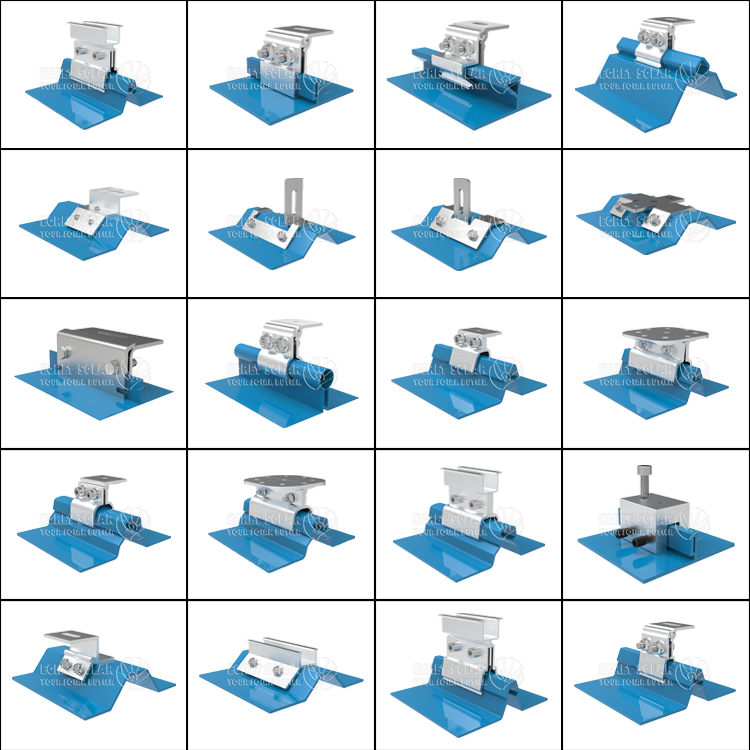- English
- Español
- Português
- русский
- Français
- 日本語
- Deutsch
- tiếng Việt
- Italiano
- Nederlands
- ภาษาไทย
- Polski
- 한국어
- Svenska
- magyar
- Malay
- বাংলা ভাষার
- Dansk
- Suomi
- हिन्दी
- Pilipino
- Türkçe
- Gaeilge
- العربية
- Indonesia
- Norsk
- تمل
- český
- ελληνικά
- український
- Javanese
- فارسی
- தமிழ்
- తెలుగు
- नेपाली
- Burmese
- български
- ລາວ
- Latine
- Қазақша
- Euskal
- Azərbaycan
- Slovenský jazyk
- Македонски
- Lietuvos
- Eesti Keel
- Română
- Slovenski
- मराठी
- Srpski језик
Tips for choosing the right solar Roof Clamp
2024-10-24
Are you planning to install solar panels on your roof? If so, one of the most important components you should pay attention to is the roof clamp. A good quality roof clamp can ensure the safety and stability of your solar panels. However, with so many options available in the market, it can be overwhelming to choose the right one for your needs. This blog post will provide you with some essential tips for selecting the ideal roof clamp for your solar panel installation.

1. Consider the Material
Roof clamps can be made of various materials, including aluminum, stainless steel, and composite. Each material has its advantages and disadvantages. For instance, aluminum is lightweight and corrosion-resistant, making it a popular choice for residential purposes. On the other hand, stainless steel is more durable and stronger, making it suitable for commercial or industrial use. Composite materials are less expensive and offer excellent insulation properties, making them ideal for extreme weather conditions. Therefore, consider the environment, climate, and intended use before selecting the material for your roof clamp.
2. Check Compatibility
Not all roof clamps are compatible with all types of solar panels. When selecting a roof clamp, make sure to check whether it is compatible with the brand and model of your solar panel. Most manufacturers provide a list of recommended roof clamps for their solar panels. If you are unsure, consult with your solar panel installer or contact the manufacturer to ensure compatibility. Otherwise, you risk damaging both the roof clamp and solar panel, which can cause costly repairs.
3. Assess Wind Load Capacity
Wind load capacity refers to the maximum amount of force a roof clamp can withstand during high wind conditions. The wind load capacity varies depending on the type of roof, geographic location, and direction of the wind. Make sure to select a roof clamp with a wind load capacity that matches the wind conditions in your area. A roof clamp with a low wind load capacity may cause the solar panels to detach from the roof during storms, resulting in severe damage.
4. Look for Safety Features
Safety should always be a top priority when installing solar panels. Therefore, consider choosing a roof clamp with additional safety features such as anti-slip pads, waterproofing, and locking mechanisms. Anti-slip pads prevent the solar panels from sliding off the roof during heavy rain or snow. Waterproofing protects the roof clamp from moisture, preventing rust and corrosion. Locking mechanisms secure the solar panels to the roof clamp, preventing theft or vandalism.
Conclusion
Choosing the right roof clamp for your solar panel installation is essential for ensuring the safety and stability of your solar panels. Consider the material, compatibility, wind load capacity, and safety features when selecting a roof clamp. By choosing the right roof clamp, you can enjoy a secure and long-lasting solar panel installation. At Egret Solar, we offer a wide range of roof clamps that are suitable for all types of solar panels and roofs. Contact us today to learn more about our products and services.




